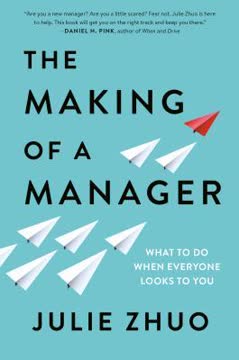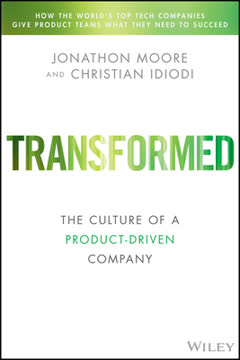Key Takeaways
1. Strategy consulting requires objectivity and independence
"Our job is to realize that people like Beckett may have stopped thinking about these issues too soon and to push them to think harder about alternatives."
Maintain perspective. Strategy consultants must remain objective and avoid being swayed by internal politics or preconceived notions. Their value comes from providing an independent, fact-based perspective to challenge assumptions and expand strategic thinking. This requires:
- Gathering data from multiple sources, not just accepting what's presented
- Questioning the motivations and incentives behind different viewpoints
- Pushing clients to consider alternatives beyond the status quo
- Developing recommendations based on rigorous analysis, not just confirming existing views
Consultants should strive to understand the client organization deeply while maintaining enough distance to see the big picture objectively. The goal is to spark new strategic thinking, not just validate current approaches.
2. Core competencies drive sustainable competitive advantage
"A firm's core competencies are those activities it engages in that (1) create economic value, (2) are rare among competitors, and (3) competitors find difficult or costly to imitate."
Identify key differentiators. Core competencies are the unique strengths that give a company sustainable competitive advantage. To leverage core competencies:
- Evaluate activities across the value chain to find sources of differentiation
- Assess whether competencies create value, are rare, and difficult to imitate
- Focus resources on developing and protecting core competencies
- Look for opportunities to apply core competencies in new markets/products
For HGS, Plastiwear technology could become a new core competency if developed and protected properly. The key is to build organizational capabilities around the technology that competitors can't easily replicate.
3. Effective strategy balances analysis with organizational realities
"Real-world strategy isn't about cracking the case."
Consider implementation. While rigorous analysis is critical, effective strategy must account for organizational dynamics and implementation challenges. Key considerations include:
- Stakeholder interests and potential resistance to change
- Organizational culture and decision-making processes
- Resource constraints and competing priorities
- Change management and communication needs
The strategy team had to balance their analytical recommendations with the political realities at HGS, including division interests and the CEO's predisposition. Strategies that look good on paper but ignore organizational factors are unlikely to succeed in practice.
4. Value chain analysis reveals strategic opportunities
"Evaluating any isolated stage of the Plastiwear value chain—like whether or not the retail shirt market was attractive—completely misses the point."
Examine the full chain. Analyzing the entire value chain, from raw materials to end customers, can reveal strategic options beyond the obvious. For Plastiwear, this meant:
- Considering opportunities in fiber/fabric manufacturing, not just end products
- Evaluating different business models (e.g. licensing vs. manufacturing)
- Identifying potential partners at different stages of the value chain
- Assessing where HGS could create and capture the most value
By looking holistically at the value chain, the team uncovered strategic options beyond just entering the retail shirt market. This broader perspective was critical for developing a comprehensive Plastiwear strategy.
5. Alliances and joint ventures can mitigate risk in new ventures
"This kind of JV creates real options for HGS—the option to expand and the option to exit—in the Plastiwear market."
Share risk and expertise. For HGS, a joint venture offered a way to enter fiber/fabric manufacturing while limiting downside risk and leveraging partner expertise. Benefits of this approach include:
- Sharing capital investment and financial risk
- Gaining access to complementary capabilities (e.g. manufacturing know-how)
- Creating flexibility to scale up or exit based on market response
- Maintaining some control over intellectual property
The JV recommendation balanced HGS's need to move quickly on Plastiwear with the reality that they lacked certain capabilities and wanted to limit risk exposure in an uncertain market.
6. Organizational structure impacts strategy implementation
"Plastiwear will be HGS's entry into the fiber and fabric industry. This industry is really different than the oil and gas and packaging industries—different chemistry, different suppliers, different manufacturing, different customers, different marketing."
Align structure to strategy. The team recommended creating a separate Plastiwear division to enable focus and new capabilities. Organizational considerations included:
- Isolating the new business from existing division politics/priorities
- Enabling a more entrepreneurial, risk-taking culture
- Attracting talent with relevant industry expertise
- Allowing for differentiated processes, metrics, and incentives
Trying to develop Plastiwear within existing divisions risked stifling innovation and limiting its potential. The new division structure aimed to give Plastiwear the autonomy and resources needed to succeed in a different industry.
7. Leadership alignment is critical for strategic change
"To me, Beckett is crucial. He runs the largest business unit and I assume has the CEO's ear."
Build coalitions. Implementing major strategic changes requires buy-in from key leaders. The team focused on:
- Identifying influential stakeholders (e.g. division heads, CFO)
- Understanding individual interests and potential objections
- Tailoring arguments to address specific concerns
- Giving preview presentations to build support before final recommendations
Gaining Beckett's support was seen as particularly critical given his influence and initial skepticism. The team carefully considered how to frame recommendations to align with his interests and mitigate perceived threats to his position.
8. Strategic decisions require balancing multiple stakeholder interests
"We've been in close touch, and we intend to highlight the aspects of our recommendations that align with earlier suggestions from Beckett and other HGS managers."
Navigate competing priorities. Major strategic decisions impact various stakeholders differently. The Plastiwear decision required balancing:
- Division interests (e.g. packaging's excess capacity vs. new division)
- Individual career concerns (e.g. Beckett's CEO aspirations)
- Shareholder expectations for growth and profitability
- Board oversight and risk tolerance
- R&D enthusiasm for new technology applications
The team's recommendations aimed to address key stakeholder concerns while still pushing HGS in a new strategic direction. This required carefully considering how different options would be perceived by various groups.
9. Effective consultants integrate analysis with client knowledge
"My value-add was that I could evaluate business alternatives independently and objectively, that I worked with a team of extremely smart people who could get access to a great deal of good information, and that we had the time to focus on the future of this company rather than being caught up in the day-to-day responsibilities of running it."
Combine perspectives. The best strategic recommendations leverage both consultant expertise and client knowledge. Key elements include:
- Rigorous external analysis and industry benchmarking
- Frameworks to structure strategic thinking (e.g. value chain, core competencies)
- Fresh perspective to challenge assumptions and status quo thinking
- Deep client engagement to understand context and constraints
- Synthesis of multiple data sources and viewpoints
The team's recommendations were stronger because they combined their analytical tools and external perspective with HGS's deep understanding of their business and industry.
10. Strategy implementation is an ongoing, iterative process
"Obviously, the details of how we'll move ahead require further deliberation."
Plan for evolution. While the board approved the overall Plastiwear strategy, successful implementation will require ongoing refinement. Next steps include:
- Developing detailed implementation plans and timelines
- Establishing clear metrics and milestones to track progress
- Creating processes to gather market feedback and adjust course
- Building capabilities to support the new strategy (e.g. hiring, training)
- Ongoing communication to maintain organizational alignment
The strategy team's work provides a foundation, but HGS leadership will need to continue evolving the strategy as they gain real-world experience with Plastiwear. Flexibility and learning orientation will be critical for long-term success.
Last updated:
FAQ
What's What I Didn't Learn in Business School about?
- Business Novel Format: The book is a business novel that follows Justin Campbell, a recent MBA graduate, as he navigates strategic decision-making in a consulting role.
- Real-World Application: It highlights the gap between theoretical knowledge from business school and practical challenges in real-world business environments.
- Focus on Strategy: The narrative explores strategic decision-making within organizations, emphasizing the importance of both analytical tools and organizational context.
Why should I read What I Didn't Learn in Business School?
- Practical Insights: Offers valuable insights into strategic decision-making, making it relevant for aspiring managers and business students.
- Engaging Storytelling: Uses a fictional narrative to make complex concepts more relatable and easier to understand than traditional business texts.
- Lessons on Responsibility: Encourages readers to take personal responsibility for their learning, as Justin realizes, “It’s not that they didn’t teach it; I just didn’t learn it.”
What are the key takeaways of What I Didn't Learn in Business School?
- Importance of Context: Effective strategy development requires understanding the unique organizational context, not just analytical tools.
- Value of Relationships: Highlights the significance of building relationships and understanding the political landscape to implement strategies successfully.
- Continuous Learning: Encourages a mindset of continuous learning and adaptability, as Justin learns to navigate his new role's complexities.
What are the best quotes from What I Didn't Learn in Business School and what do they mean?
- Personal Responsibility: “It’s not that they didn’t teach it; I just didn’t learn it.” This reflects the importance of personal engagement in learning.
- Right Questions: “If you ask the wrong question, about the wrong industry, it doesn’t really matter what the answer is.” Emphasizes framing the right questions in strategic analysis.
- Risk-Taking: “The real risk is doing nothing.” Underscores the necessity of taking calculated risks in business to avoid missed opportunities.
What is the VRIO framework mentioned in What I Didn't Learn in Business School?
- Definition of VRIO: A tool to evaluate a firm's resources and capabilities to determine if they can provide a competitive advantage, standing for Value, Rarity, Imitability, and Organization.
- Key Questions: Prompts firms to ask if a strategy is valuable, rare, difficult to imitate, and if the organization is structured to exploit these advantages.
- Application in Analysis: Justin uses the VRIO framework to assess Plastiwear's potential, helping identify if HGS can sustain a competitive advantage.
How does What I Didn't Learn in Business School illustrate the concept of synergies?
- Synergies Defined: Refers to benefits when business units work together, creating more value than operating independently.
- Hutchins’ Perspective: Suggests Plastiwear can leverage synergies from the packaging division’s manufacturing capabilities to enhance profitability.
- Critical Viewpoint: Livia argues synergies are often overestimated, and Plastiwear's real value should be evaluated independently.
What challenges does HGS face in pursuing the Plastiwear opportunity?
- Market Attractiveness: The men’s dress shirt industry is fragmented with high rivalry, making it unattractive for new entrants.
- Internal Politics: Conflicting interests among HGS managers complicate decision-making and can bias analysis.
- Resource Allocation: HGS must consider how pursuing Plastiwear impacts existing operations and resource allocation.
How does Justin’s character develop throughout What I Didn't Learn in Business School?
- Initial Naivety: Starts as a typical MBA graduate, relying on theoretical knowledge without practical application.
- Growth Through Experience: Learns to question assumptions, develop viewpoints, and engage critically with information.
- Embracing Responsibility: Recognizes the importance of taking ownership of his learning and decisions, becoming an active contributor in strategic discussions.
What role does organizational politics play in What I Didn't Learn in Business School?
- Influence on Decision-Making: Personal interests and political dynamics within HGS affect strategic choices.
- Navigating Relationships: Understanding motivations and influences of stakeholders is crucial for strategy implementation.
- Balancing Interests: Consultants must balance analytical rigor with awareness of organizational context and politics.
How does What I Didn't Learn in Business School address the limitations of traditional business education?
- Real-World Complexity: Argues traditional education oversimplifies strategic issues, unpreparing students for organizational realities.
- Need for Critical Thinking: Highlights the importance of adapting theoretical knowledge to real-world situations.
- Learning from Experience: Advocates for experiential learning, suggesting real-world challenges provide valuable lessons.
What is the significance of Plastiwear in What I Didn't Learn in Business School?
- Innovative Technology: Represents a breakthrough in fabric technology with potential applications across industries.
- Strategic Decision-Making: Serves as a case study for understanding how companies assess new technologies and associated risks.
- Organizational Change: Illustrates challenges of implementing new strategies within established corporate structures.
How does What I Didn't Learn in Business School depict the challenges of consulting?
- High Expectations: Consultants face pressure to deliver results quickly while managing client expectations and team dynamics.
- Navigating Corporate Culture: Highlights difficulties in understanding and adapting to unique client organization cultures.
- Balancing Objectivity and Relationships: Discusses maintaining objectivity while building rapport with clients and stakeholders.
Review Summary
What I Didn't Learn in Business School received mixed reviews, with an average rating of 3.79 out of 5. Many readers found it engaging and insightful, particularly for MBA students and aspiring consultants. The book's narrative style was praised for making business concepts more accessible. However, some critics felt it lacked depth and relied on obvious insights. Several reviewers appreciated the reflection questions at the end of each chapter, while others found the protagonist's mistakes frustrating. Overall, it was considered a light but informative read for those interested in consulting and real-world business applications.
Similar Books










Download PDF
Download EPUB
.epub digital book format is ideal for reading ebooks on phones, tablets, and e-readers.




